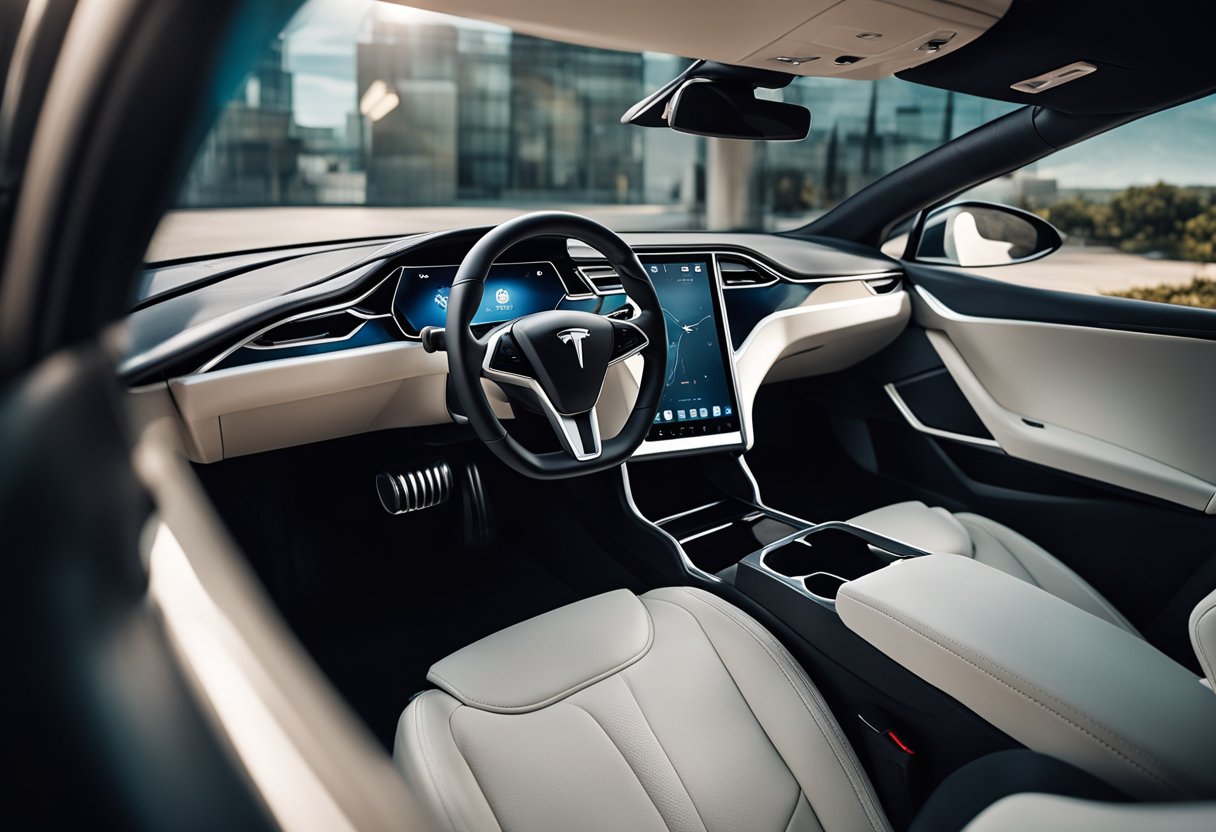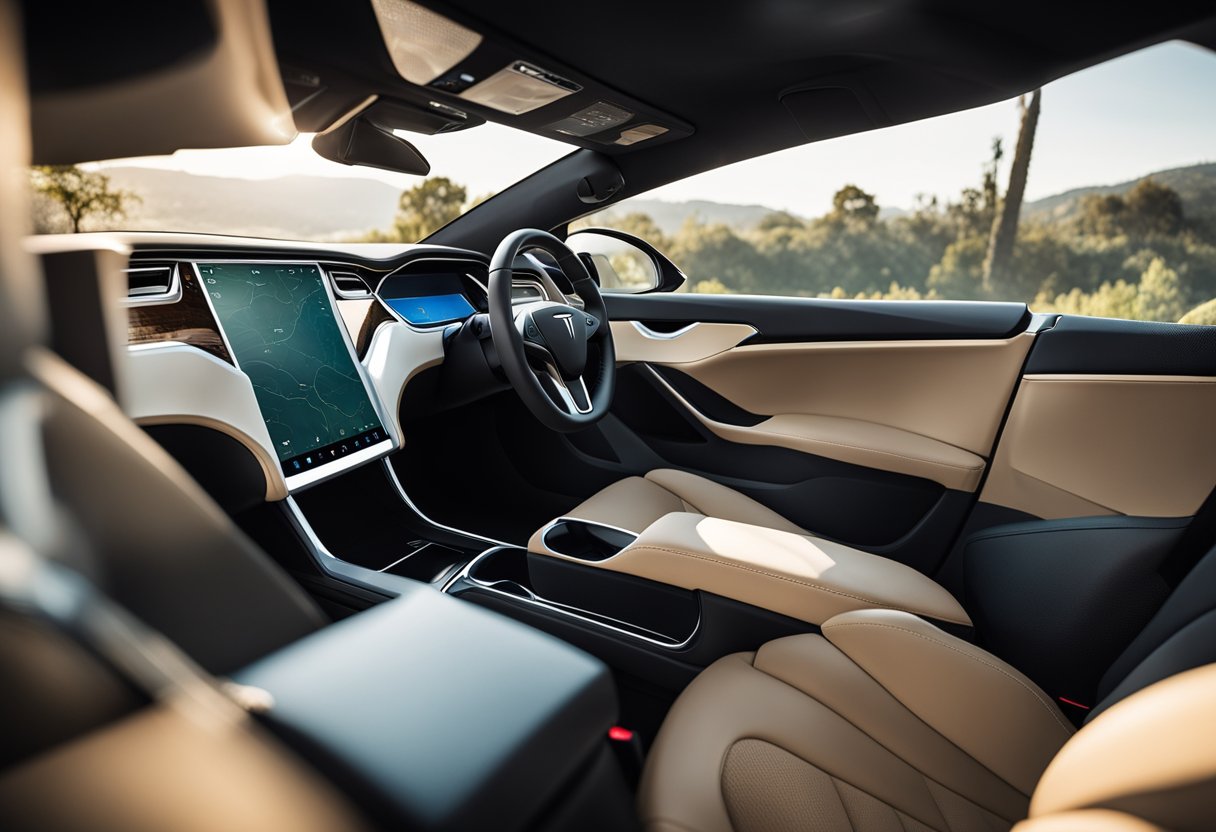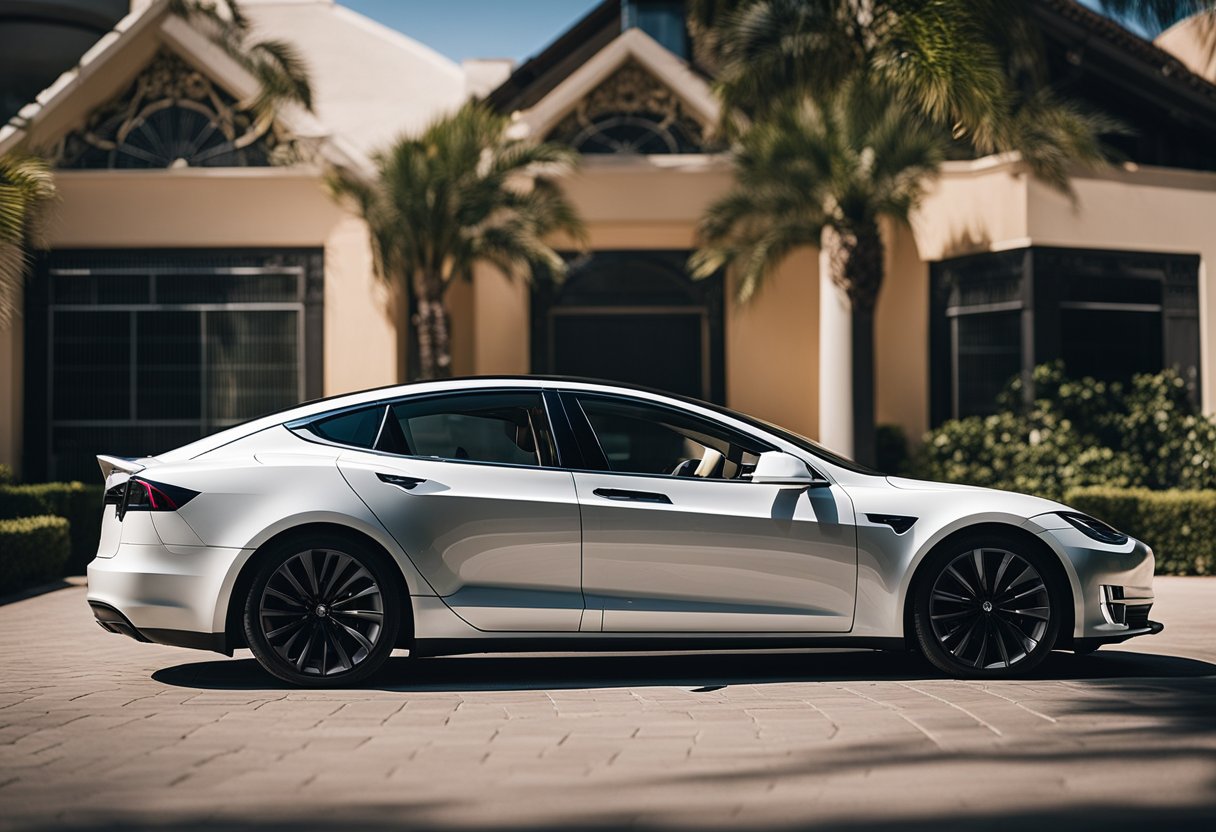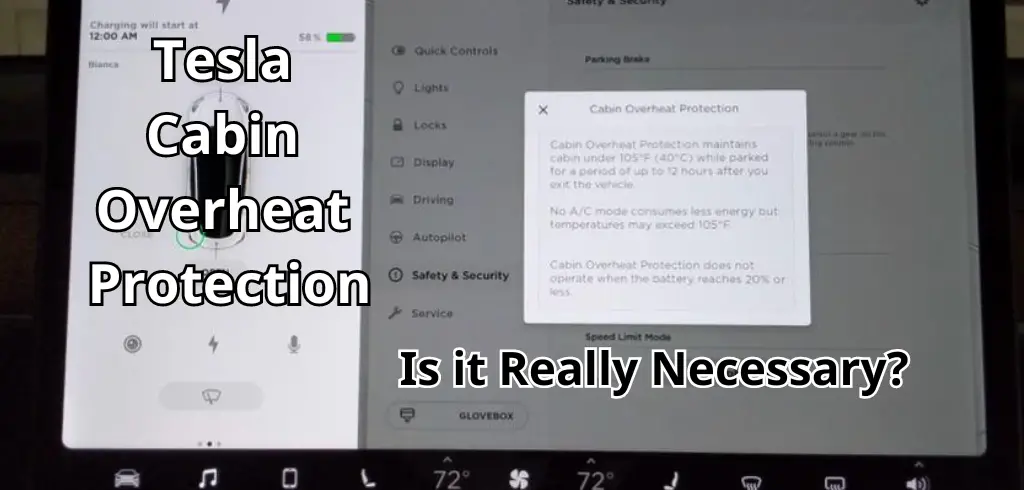If you own a Tesla, you may have heard about the Cabin Overheat Protection feature. This feature is designed to keep the interior of your Tesla cool even in the hottest weather. But is it really necessary? In this article, we’ll take a closer look at Tesla’s Cabin Overheat Protection feature and explore whether or not it’s worth using.
 Tesla’s Cabin Overheat Protection feature is designed to keep the inside of your car cool, even when it’s parked in the sun. The feature uses the car’s air conditioning system to maintain a comfortable temperature, so you don’t have to worry about getting into a hot car when you return. The system is activated when you exit the vehicle, and it can run for up to 12 hours after you leave the car, or until the battery drops below 20%.
Tesla’s Cabin Overheat Protection feature is designed to keep the inside of your car cool, even when it’s parked in the sun. The feature uses the car’s air conditioning system to maintain a comfortable temperature, so you don’t have to worry about getting into a hot car when you return. The system is activated when you exit the vehicle, and it can run for up to 12 hours after you leave the car, or until the battery drops below 20%.
The benefits of Tesla’s Cabin Overheat Protection are clear. If you live in an area with hot summers, you can use this feature to keep your car cool and comfortable, even when it’s parked in the sun.
This can make a big difference in your overall driving experience, as you won’t have to worry about getting into a hot car and waiting for the air conditioning to cool things down. Additionally, the feature can help to protect your car’s interior from damage caused by excessive heat, such as cracking or fading of the dashboard or upholstery.
Table of Contents
Key Takeaways
- Tesla’s Cabin Overheat Protection feature is designed to keep the interior of your car cool, even when it’s parked in the sun.
- The feature can help to protect your car’s interior from damage caused by excessive heat, such as cracking or fading of the dashboard or upholstery.
- If you live in an area with hot summers, using Tesla’s Cabin Overheat Protection feature can make a big difference in your overall driving experience.
Understanding Tesla’s Cabin Overheat Protection
If you own a Tesla, you might have heard about the Cabin Overheat Protection feature. This feature is designed to keep the interior of your Tesla cool, even in scorching heat. In this section, we will explain what Cabin Overheat Protection is and how it works.
What is Cabin Overheat Protection?
Cabin Overheat Protection is a part of the climate control system in Tesla vehicles. It is a safety feature that helps keep the cabin temperature at a comfortable level, even when parked in direct sunlight. This feature uses the air conditioning or ventilation system to cool the cabin, so long as the vehicle has enough battery.
How it Works
The Cabin Overheat Protection feature is activated when the interior temperature of the car reaches a certain level. This level is set by default at 105°F (40°C), but it can be adjusted by the driver. Once the temperature inside the car reaches this level, the system will automatically turn on the air conditioning or ventilation system to cool the cabin.
The Cabin Overheat Protection feature can run for up to 12 hours after it is enabled or until your battery runs down to 20%, depending on which comes first. This feature can be turned on or off manually from the touchscreen, and it is recommended to keep it on during hot weather.
It is important to note that the Cabin Overheat Protection feature does not cool the battery or any other electronics in the car. It only cools the cabin temperature to a comfortable level.
In conclusion, the Cabin Overheat Protection feature is a useful safety feature in Tesla vehicles that helps keep the cabin temperature at a comfortable level, even when parked in direct sunlight. It is recommended to keep this feature on during hot weather to prevent overheating.
Practical Application and Benefits

Safety Measures and Comfort
Tesla’s Cabin Overheat Protection is a safety measure that ensures the safety and comfort of passengers and pets left in the car while parked. When parked in direct sunlight or extreme temperatures, the car’s interior temperature can rise to uncomfortable and even dangerous levels, which can lead to overheating and battery drain.
By activating the air conditioning system, the Cabin Overheat Protection keeps the car at a comfortable temperature, preventing passengers and pets from overheating. You can turn on the Cabin Overheat Protection from the mobile app before you leave your car, so you don’t have to worry about it when you return.
Battery Life and Efficiency
The Cabin Overheat Protection not only ensures the safety and comfort of passengers and pets but also helps to preserve the battery life and efficiency of your Tesla. When the car’s interior temperature gets too hot, the battery power can drain faster, reducing the range and rated miles of your car. By keeping the car at a comfortable temperature, the Cabin Overheat Protection helps to prevent battery draining and extends the battery life of your Tesla.
In addition, the Cabin Overheat Protection can help to prevent damage to leather seats and other touch surfaces from direct sunlight. The feature can also be used with fan-only mode, which consumes less power than air conditioning, to further extend the battery life of the vehicle.
If you live in a desert or any other hot area, you might be wondering whether Tesla’s cabin overheat protection is necessary for your car. In this section, we’ll take a closer look at the Model 3, Model X, and Model Y to see if they come with overheat protection and how it works.
Model 3
The Model 3 comes with cabin overheat protection as a standard feature. This feature activates the climate control system to reduce and maintain the temperature of the cabin, preventing it from getting too hot after being parked in the sun. You can also activate this feature manually by tapping the “Cabin Overheat Protection” button on the climate control menu.
Model X
The Model X also comes with cabin overheat protection as a standard feature. The climate control system will automatically activate when the temperature inside the cabin reaches a certain level, keeping the interior cool even in hot weather conditions.
Model Y
Like the Model 3 and Model X, the Model Y also comes with cabin overheat protection as a standard feature. This feature activates the climate control system to keep the interior cool, even when parked in direct sunlight.
In summary, all Tesla models come with cabin overheat protection as a standard feature, which activates the climate control system to keep the interior cool, even when parked in hot weather conditions. This feature is especially important if you live in a desert or any other hot area, where temperatures can reach extreme levels.
Experiments and User Experiences

Tesla Cabin Overheat Protection is a safety feature that cools the cabin of your Tesla by automatically activating the HVAC (climate control) system when it gets too hot inside the cabin. But is it necessary? Let’s take a look at some experiments and user experiences.
Experiments
Several experiments have been conducted to test the effectiveness of Tesla Cabin Overheat Protection. One such experiment involved leaving a Tesla Model S parked in the sun with outside temperatures reaching up to 90°F. The cabin temperature was monitored, and it was found that the temperature inside the car remained at a comfortable level, thanks to the Cabin Overheat Protection feature.
Sunshade
Another way to keep your Tesla cabin cool is to use a sunshade. A sunshade can help reflect sunlight and heat away from the car, reducing the amount of heat that enters the cabin. While it is not a substitute for the Cabin Overheat Protection feature, it can help reduce the workload on the HVAC system.
Pets
Tesla owners who have pets often use the Cabin Overheat Protection feature to keep their furry friends safe. Leaving a pet in a parked car can be dangerous, especially in hot weather. The Cabin Overheat Protection feature ensures that the cabin temperature does not get too hot, keeping your pet safe and comfortable.
Overall, while Tesla Cabin Overheat Protection may not be necessary in all situations, it is a useful feature that can help keep you and your passengers comfortable and safe in hot weather. Whether you’re running errands, going on a road trip, or just parked outside your home, the Cabin Overheat Protection feature can help ensure that your Tesla’s cabin stays at a comfortable temperature.
Frequently Asked Questions

Is Tesla’s cabin overheat protection feature necessary for Model Y?
Yes, Tesla’s cabin overheat protection feature is necessary for Model Y. This feature helps to prevent the cabin temperature from rising to uncomfortable levels, especially during hot weather.
Is the Tesla Model 3’s cabin overheat protection feature necessary?
Yes, the Tesla Model 3’s cabin overheat protection feature is also necessary. It helps to maintain a comfortable temperature inside the cabin even when the car is parked under the sun for extended periods.
Does Tesla’s cabin overheat protection feature drain the battery?
Yes, Tesla’s cabin overheat protection feature does use the battery to power the air conditioning system. However, the feature is designed to minimize battery drain by turning off the air conditioning system once the cabin temperature has been lowered to a certain level.
Can a Tesla overheat in hot weather without cabin overheat protection?
Yes, a Tesla can overheat in hot weather if the cabin overheat protection feature is not activated. The cabin temperature can rise to uncomfortable levels, which can affect the performance of the car’s electronics and battery.
What is the temperature setting for Tesla’s cabin overheat protection feature?
Tesla’s cabin overheat protection feature is activated when the cabin temperature exceeds 40°C (104°F). The air conditioning system is then automatically turned on to cool down the cabin. Drivers can also set a customized temperature of 90, 95 or 100°F.
Is it possible to disable Tesla’s cabin overheat protection feature?
Yes, it is possible to disable Tesla’s cabin overheat protection feature. However, it is not recommended as it can lead to uncomfortable cabin temperatures and affect the performance of the car’s electronics and battery.
